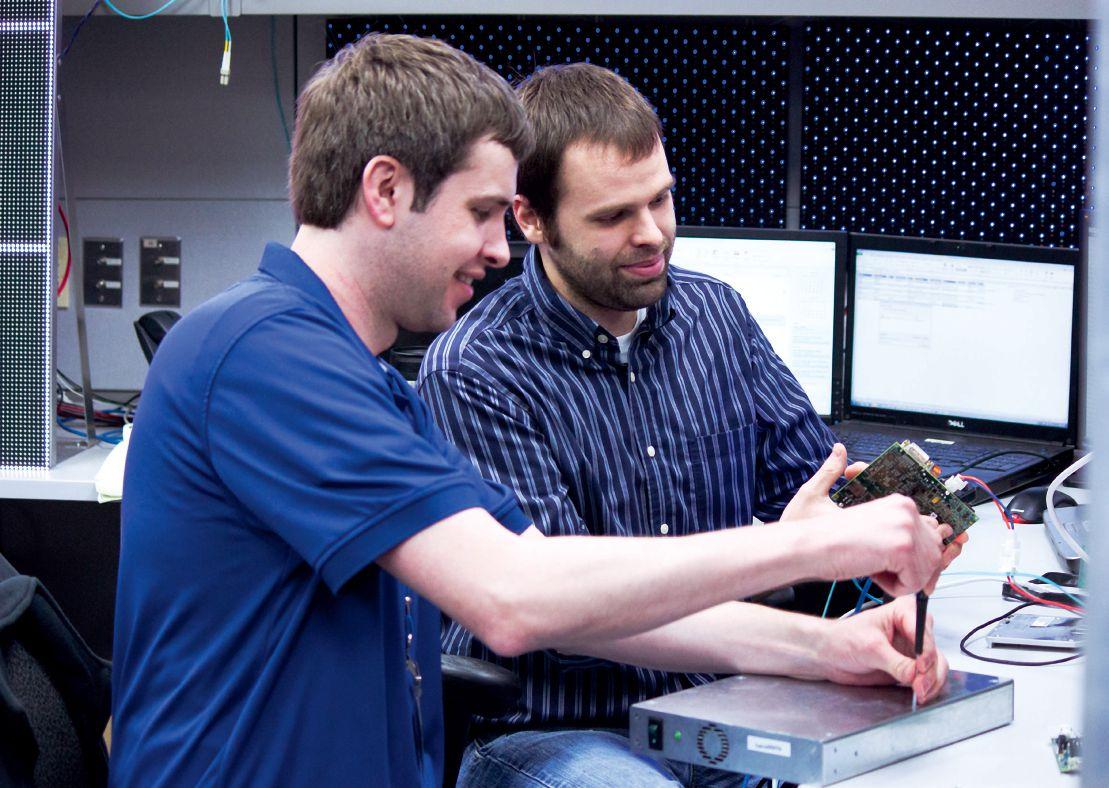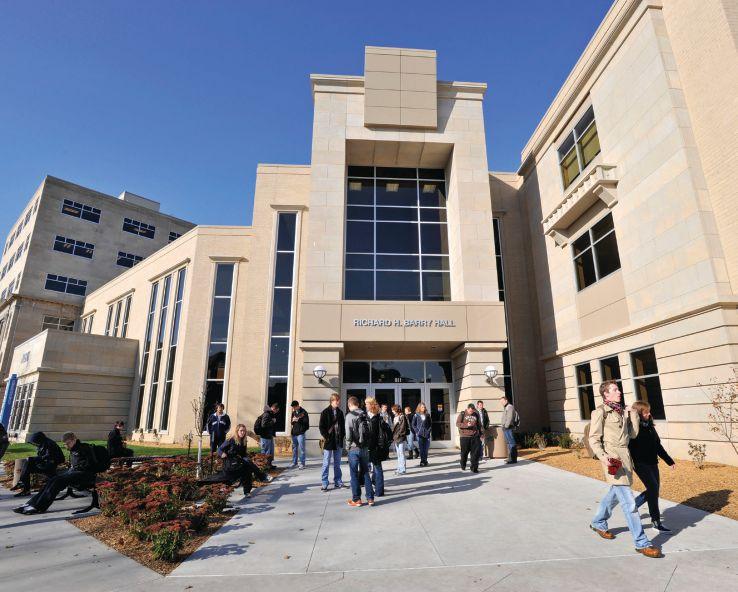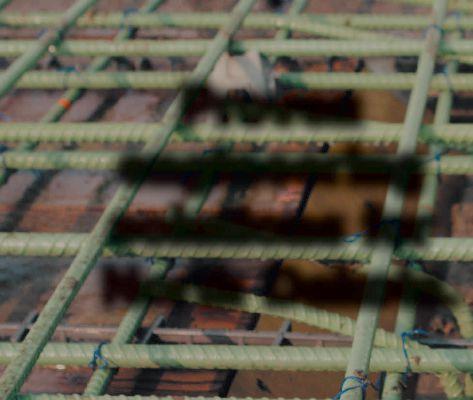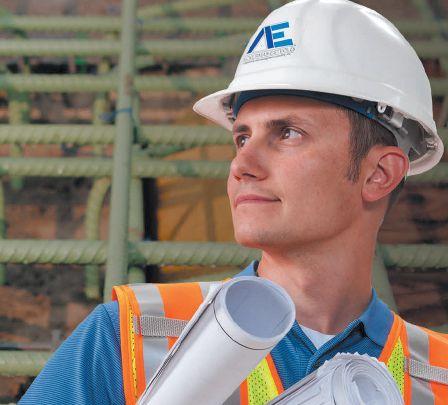
5 minute read
Mining for engineers
Career fairs, internships, co-ops vital to recruitment in tight labor market
BY ROB SWENSON
There’s never been a better time to be an engineer, Lewis Brown says. Nor, in his opinion, has there ever been a better time to be a college student just beginning to study engineering.
Brown is the dean of the Jerome J. Lohr College of Engineering at South Dakota State University in Brookings. So he might not come from an entirely objective vantage point. However, administrators at engineering schools throughout the northern Plains express similar thoughts.
“I would say about half the seniors I’m advising already have job offers,” says Matthew Cavalli, the assistant dean for outreach and recruiting at the College of Engineering and Mines at the University of North Dakota in Grand Forks. “I think that’s a pretty common trend among faculty.”
Demand for engineers has been increasing for the past several years, says Cavalli, who is also an associate professor and the chair of the Department of Mechanical Engineering at UND.
The regional and national economies have been on a gradual upswing as businesses have recovered from the Great Recession of 2007-2008. Regional economic forces, such as the oil-production boom in western North Dakota, are adding to the demand for engineers and workers of all types.
Recruiting employees in high-precision fields such as engineering presents special issues for companies because of educational requirements and the limited pool of prospective applicants.
Adding to the challenge for companies that employ engineers, as Brown notes, is the demographic reality that a lot of engineers in the proportionately large Baby Boom generation are beginning to retire, creating even more vacancies for businesses to fill. That trend will continue unfolding for several years.
Regardless, companies in the region that employ significant numbers of engineers say they are attracting and retaining adequate numbers. They’ve had to make extra efforts, however.
Companies rely heavily on internships and co-ops to attract good students and groom them for full-time employment after graduation. Generally, internships are summer positions and co-ops are work experiences for students that might last a school term or longer.
Brookings, S.D.-based Daktronics Inc. hired 50 to 60 interns this year, many of whom are studying engineering and other technical fields. Daktronics has an especially close relationship with South Dakota State University. But the company recruits engineering students and graduates from colleges throughout the region, including schools in the Dakotas, Minnesota and Iowa, says corporate recruiter Leah Brink.
“I think we classify ourselves as always being in growth mode,” she says.
Daktronics promotes itself as the global leader in the design and production of electronic scoreboards, programmable display systems and large-screen video displays. The company’s scoreboards are used at 26 of the 31 National Football League stadiums in the United States, for example.
The company started modestly in 1968 when two professors of electrical engineering at SDSU started making electronic voting systems for state legislatures. Today, Daktronics is a publicly traded company that employs about 1,800 people in Brookings, 200 in Sioux Falls and 200 in Redwood Falls, Minn. Several hundred additional employees are scattered around the nation and the world.

Students attending SDSU and other colleges in the area make up about 9 percent of the company’s local work force. Brink sees businesses from all over the country at job fairs on university campuses. That’s an indication of the high level of corporate competition for top-notch graduates.

“We are facing stiff competition for those graduates. I think more companies are recognizing the value of the students our regional universities are producing,” she says.
Raven Industries Inc., a manufacturing company in Sioux Falls, S.D., is among the other regional companies competing for graduates in technical fields. Raven makes products such as ag-related electronics equipment, films used as covering material and research balloons. The company employs roughly 1,000 people in the Sioux Falls area and 300 more in other states.
Raven has research and development offices at the South Dakota School of Mines and Technology in Rapid City and at SDSU. Raven’s SDSU office employs eight people, including six interns, and its SDSMT office employs seven, including six interns. The branch offices are good recruiting tools for the company, says Jan Matthiesen, vice president of human resources at Raven. “That really gives us an advantage.”
In addition, Raven hires about 40 interns every summer, mostly engineering students. Matthiesen admits that recruiting engineers, especially those with experience, is challenging. “I’m not going to say it’s easy. It’s not easy. We have good luck with our intern program,” she says.
To help attract and retain good employees, including engineers, Raven also has a tuition-reimbursement program for employees who want to add to their education. Employees may qualify for up to $4,000 a year for undergraduate study and $5,000 a year for graduate work.

Record numbers of companies have been participating in career fairs at regional engineering schools. A record 153 companies from the United States and Canada took part in a September career fair on the SDSMT campus, for example.
“We had quite a few new companies here this fall,” says Darrell Sawyer, director of the Career and Professional Development Center at SDSMT. “Some of them were engineering companies that do a lot of work in North Dakota.”
Companies seem to be returning to the pre-recession employment levels, he says.

The Molded Fiber Glass South Dakota plant in Aberdeen is among the regional companies that started coming to the SDSMT career fair in recent years. The company, which makes blades for wind turbines, employs 560 people in Aberdeen.
Marcia Medley, the new human resources manager at Molded Fiber Glass, previously worked in HR management for Hub City Inc., another manufacturing plant in Aberdeen. She has noticed in the past that students at job fairs tend to flock to the booths operated by big-name, national companies. At times, she has stood in the aisle of a career fair to encourage students to check out her company’s booth.
Although Molded Fiber Glass has not had trouble finding interns, companies tend to snap up the best students early, Medley says.


Hub City, which is a subsidiary of Regal Beloit Corp., has a small, branch facility with about 25 employees in Brookings. The branch facility employs students who work part time and serves as a pipeline to help get engineers into the company, Medley says.
Partnering with universities helps companies meet employment challenges, says Laura Ness Owens, director of communications at Doosan Bobcat Co.’s corporate offices in West Fargo. The company employs more than 2,000 people in North Dakota. It has plants in Gwinner, Wahpeton and Bismarck, N.D., and in Litchfield, Minn.
Doosan Bobcat has strong relationships with engineering programs at UND and North Dakota State University in Fargo, and recruits students at all of the engineering colleges in the region, Ness Owens says. In many cases, students and graduates contact the company, she says.
“From an engineering perspective, we’ve got a good group of engineers. We’re always looking for new, fresh talent,” she says. “We’ve been fortunate to have relationships with the universities that help us with that recruiting process.”
Are NDSU engineering graduates in strong demand? “Yes, with six exclamation points,” says Nancy Rossland, assistant to the dean for college relations in NDSU’s engineering college. A record 225 companies were represented at NDSU’s most recent career fair.
Employers used to make job offers in the spring, Rossland says. “Now if they don’t have talent hired and contracts signed in the fall for the spring and summer, they’re behind the game. There’s that much competition for these students,” she says.
In addition to the four state universities in the Dakotas with engineering schools, colleges such as Minnesota State University in Mankato offer engineering degrees and also serve the region. Convincing young people to attend college can be a challenge, however, some college officials point out.
Starting engineers can make roughly $55,000 a year. But truck drivers and other workers in the western North Dakota oil fields can make even more than that.
A plunge in oil prices might be the biggest economic threat facing North Dakota and regional economy, says Cavalli, of UND. A sustained drop in oil prices probably would reduce regional demand for engineers. But such a dramatic slowdown like that is not likely anytime soon.
“The last several years it’s been ramping up,” Cavalli says. “I don’t foresee one.” PB
Rob Swenson Contributing writer RobSwensonMediaServices@gmail.com










